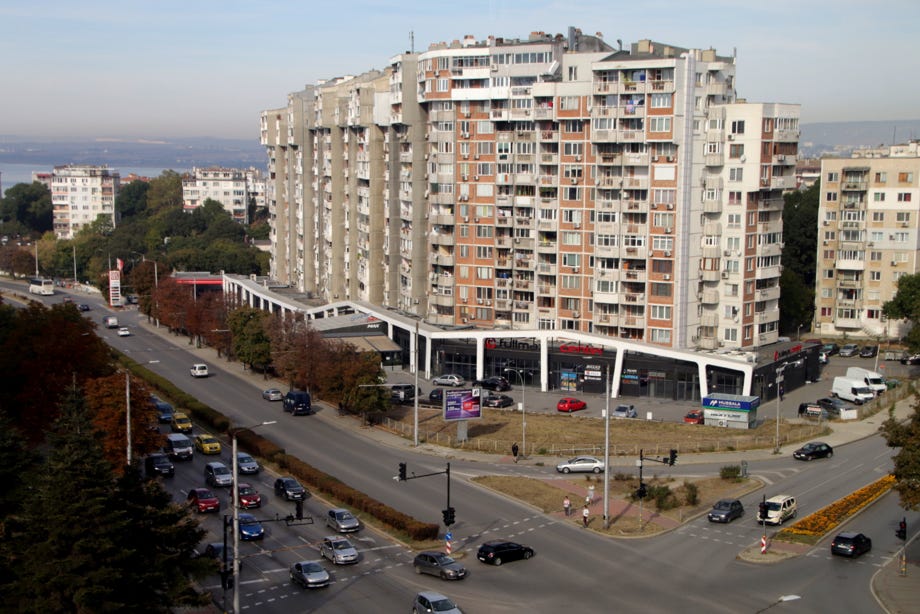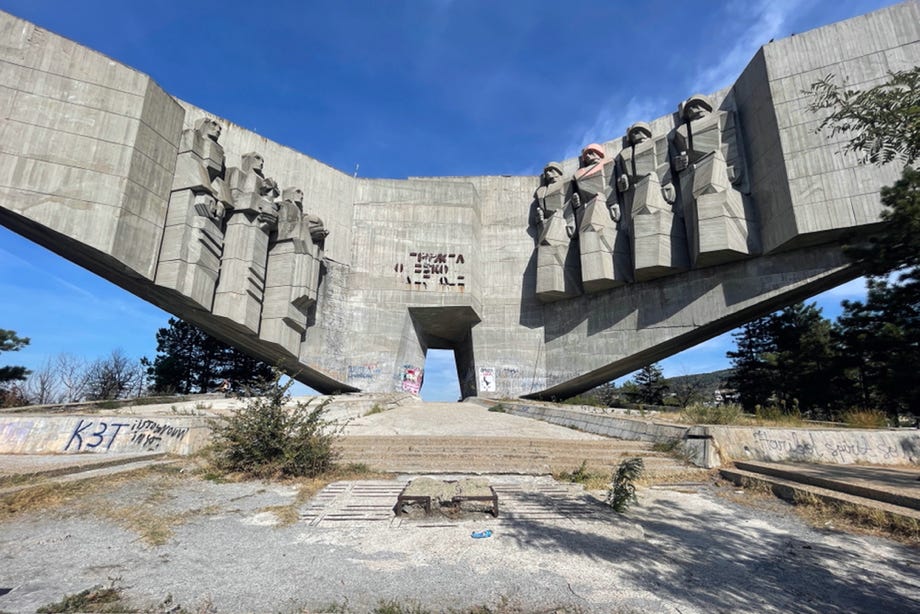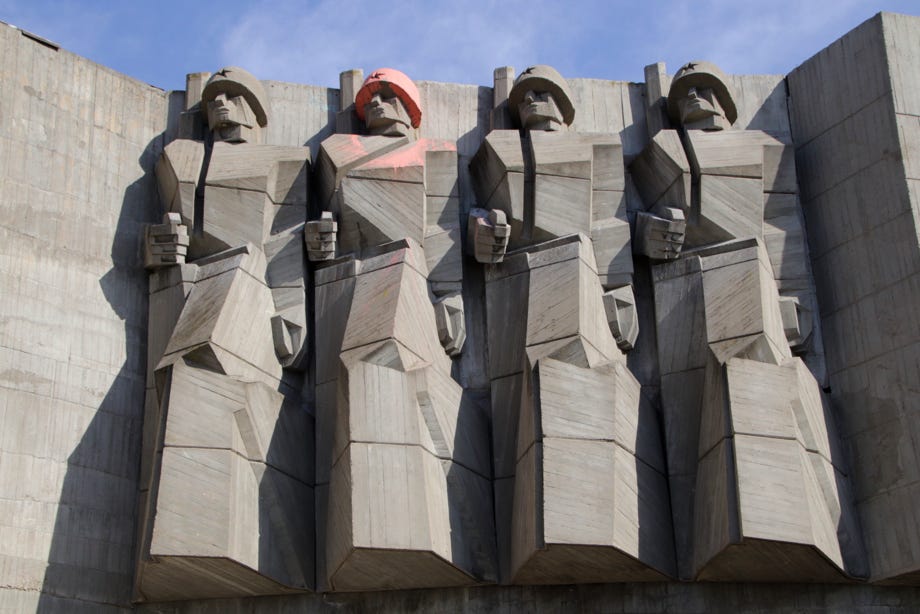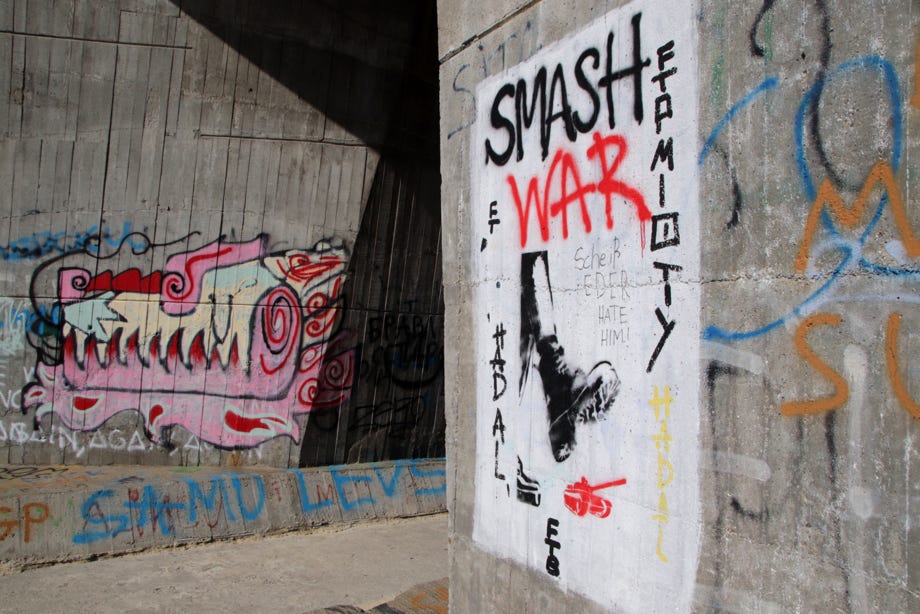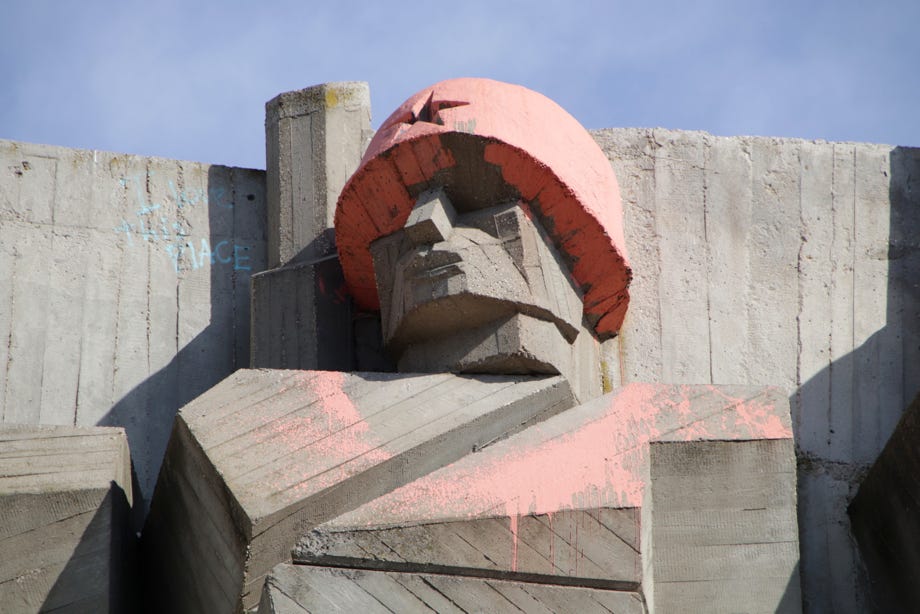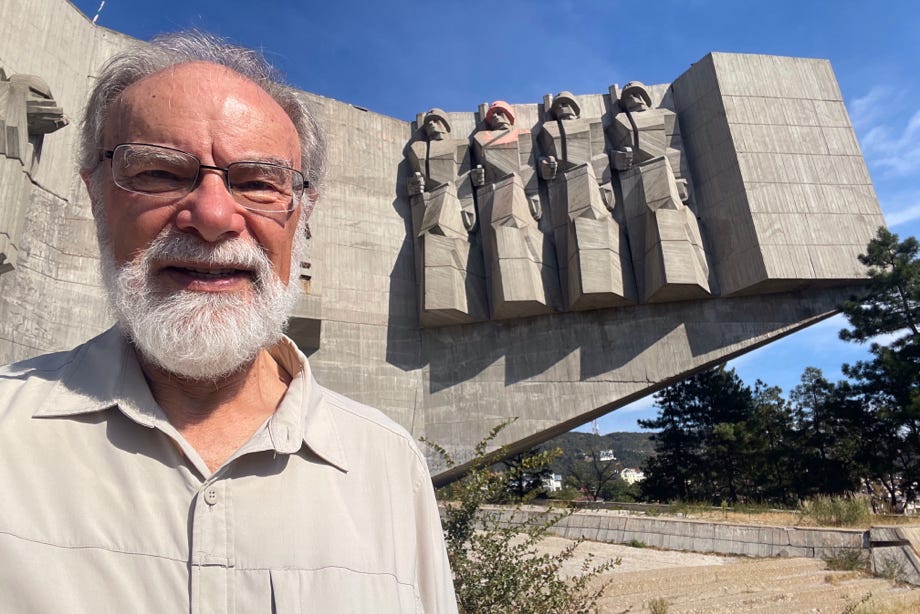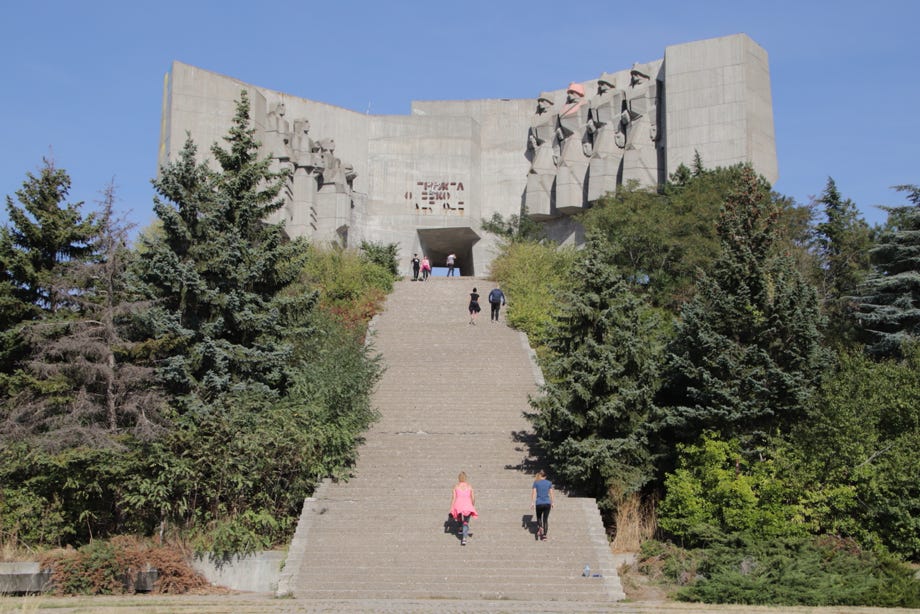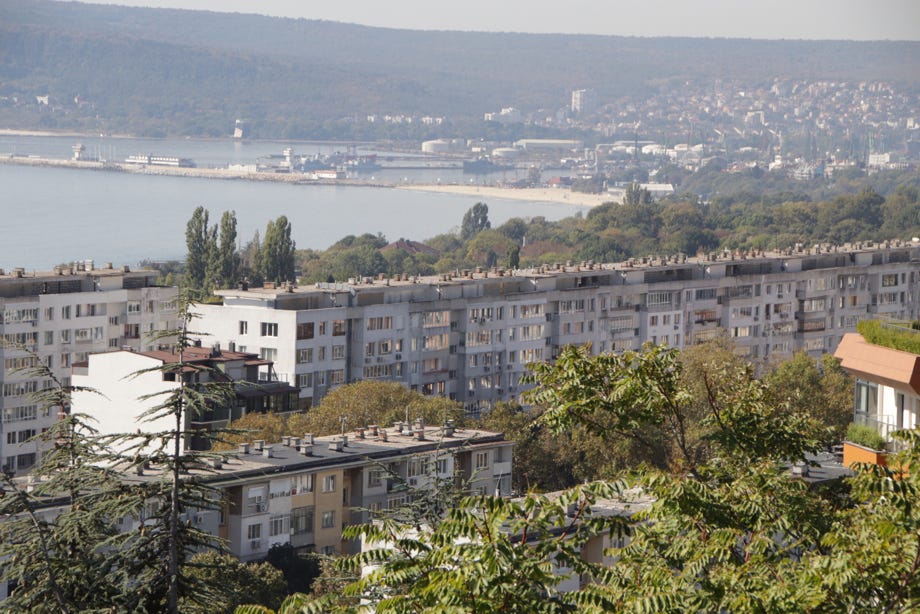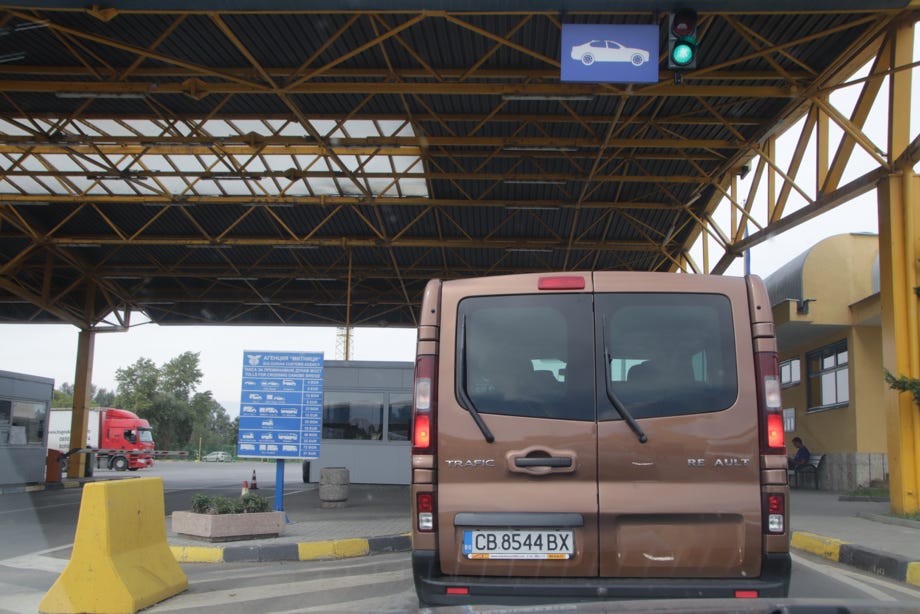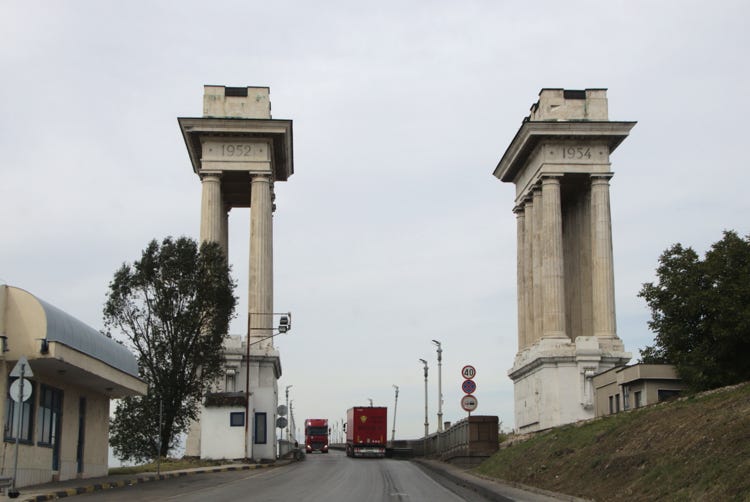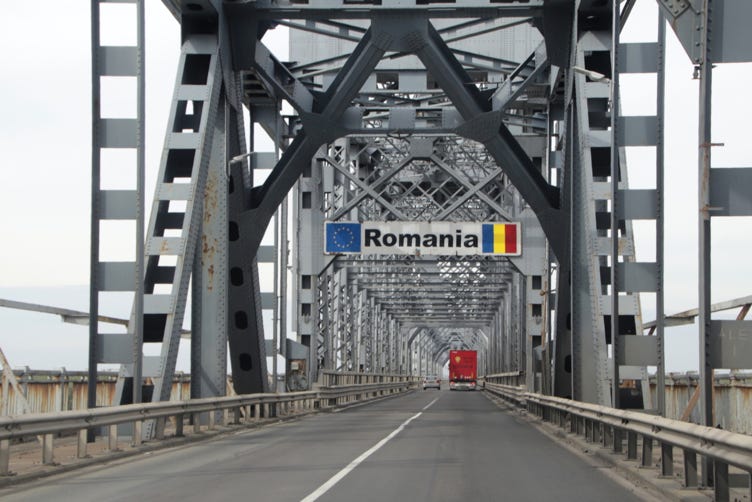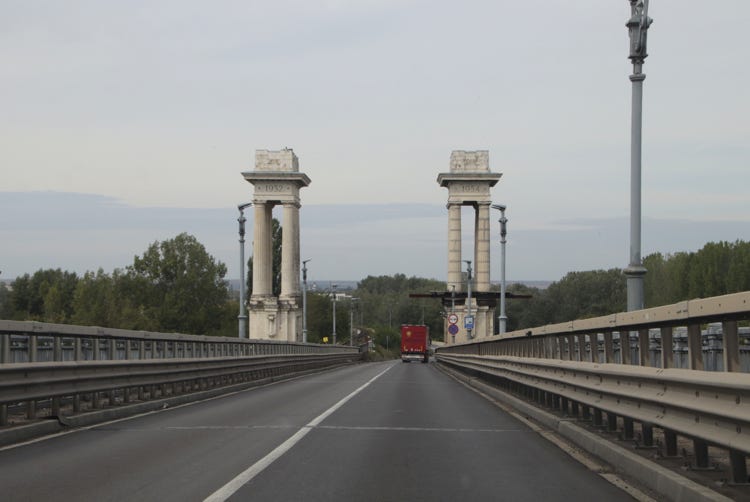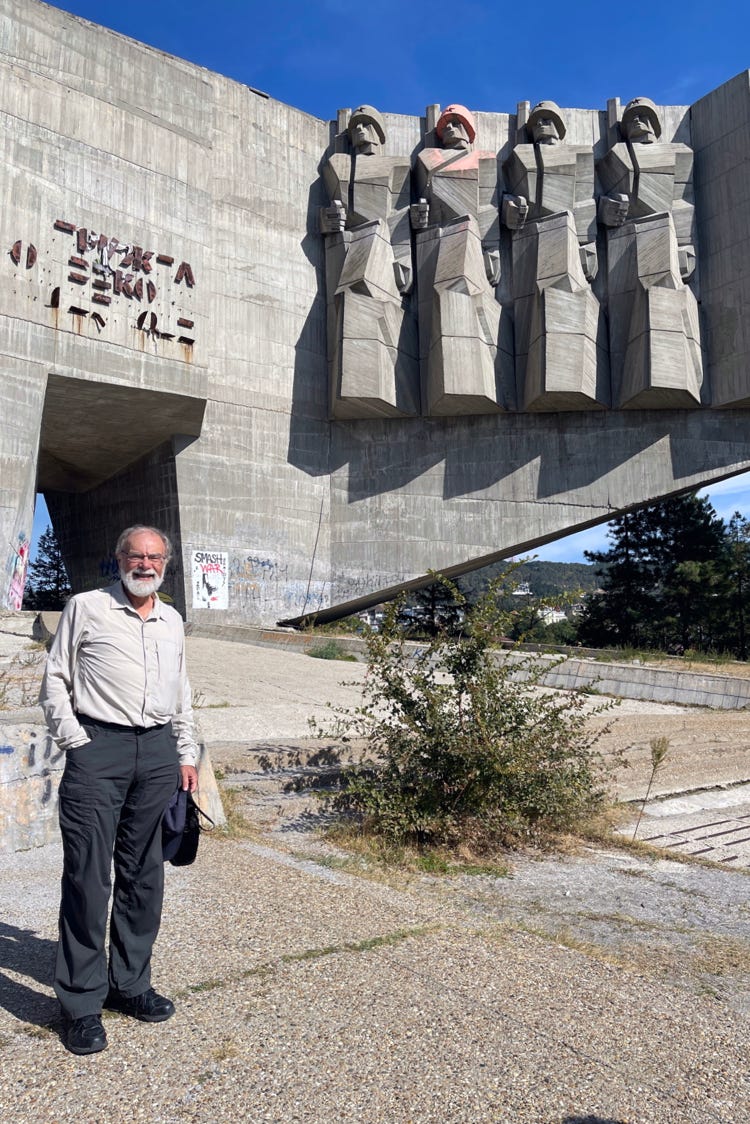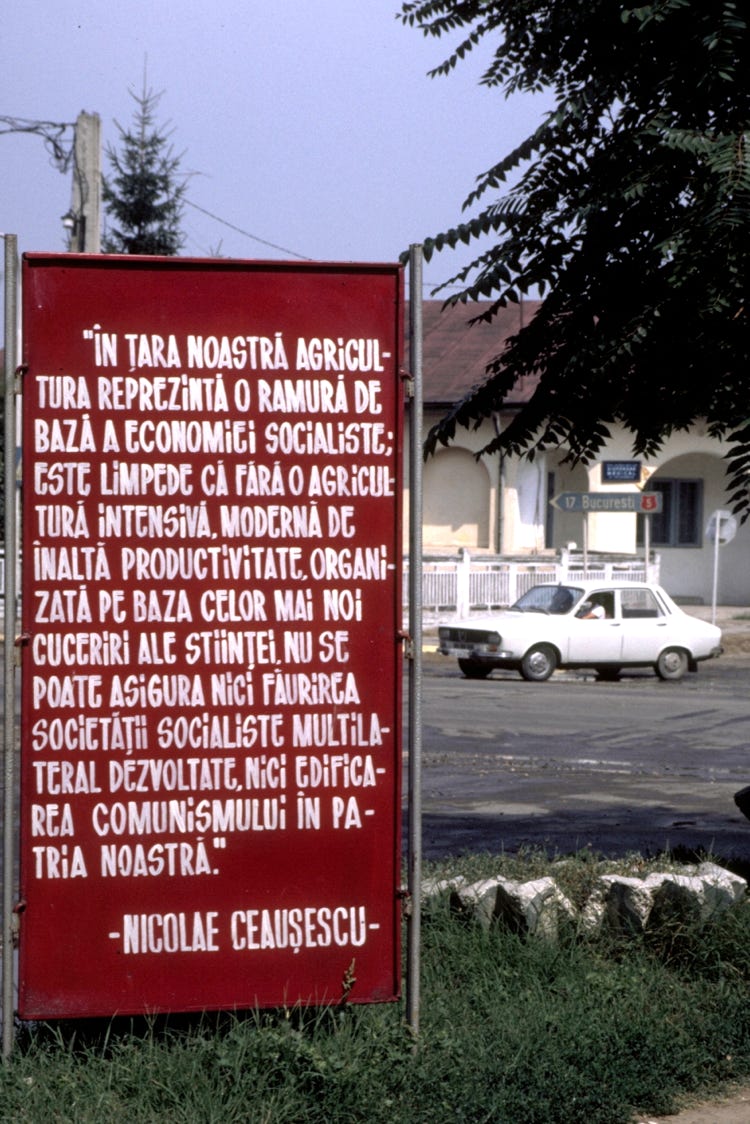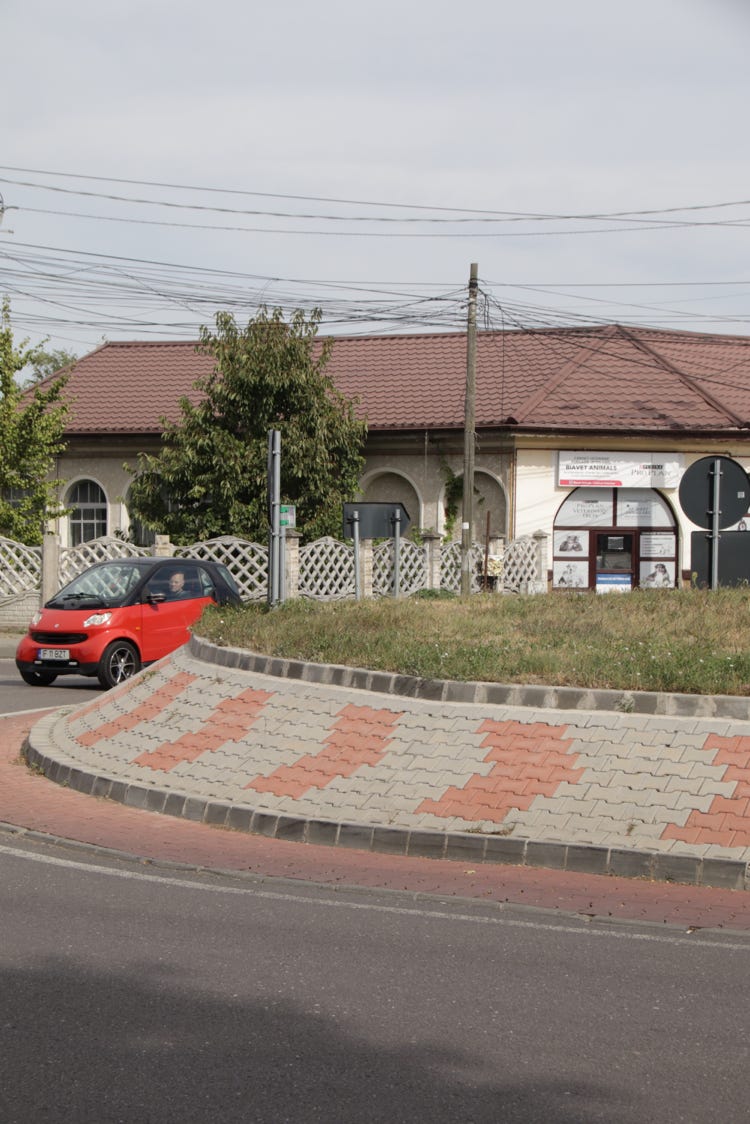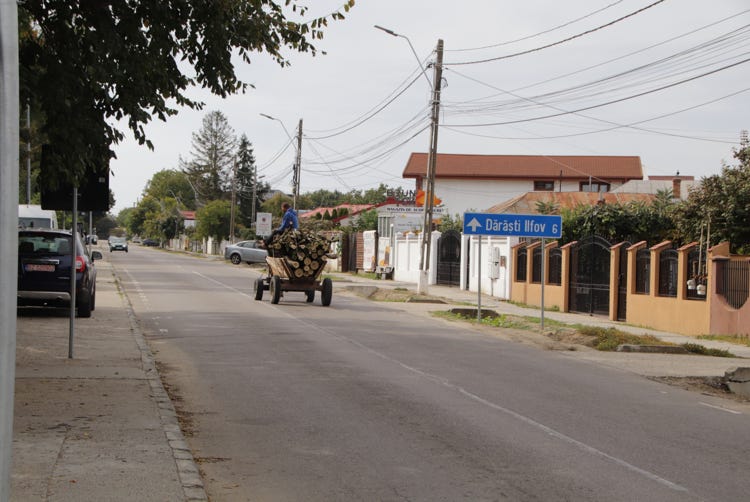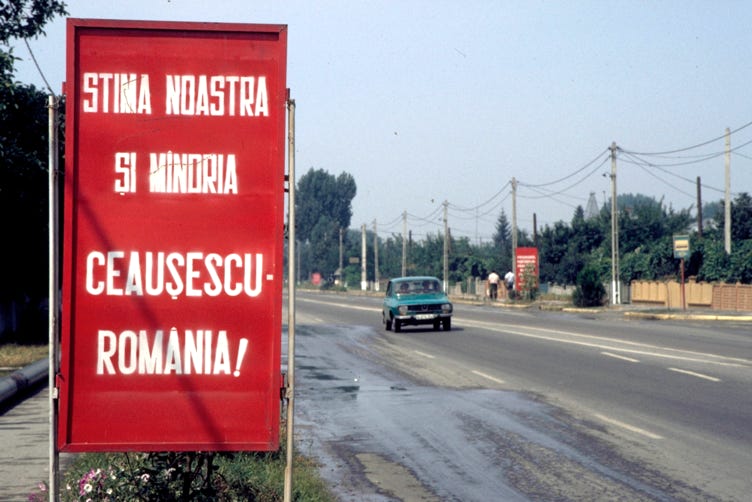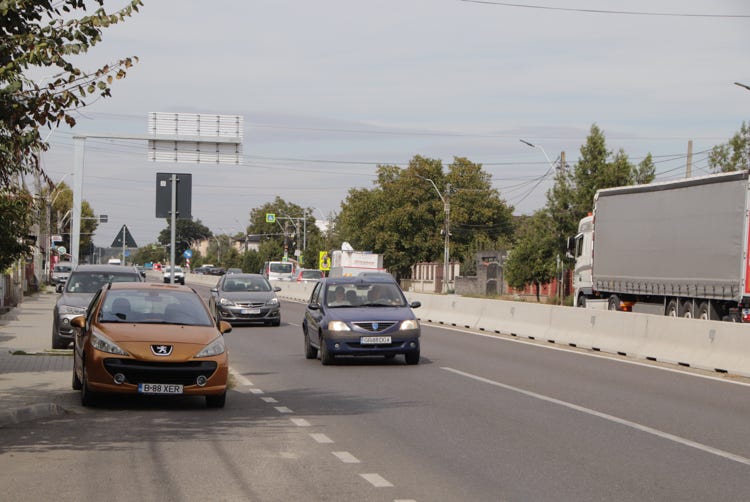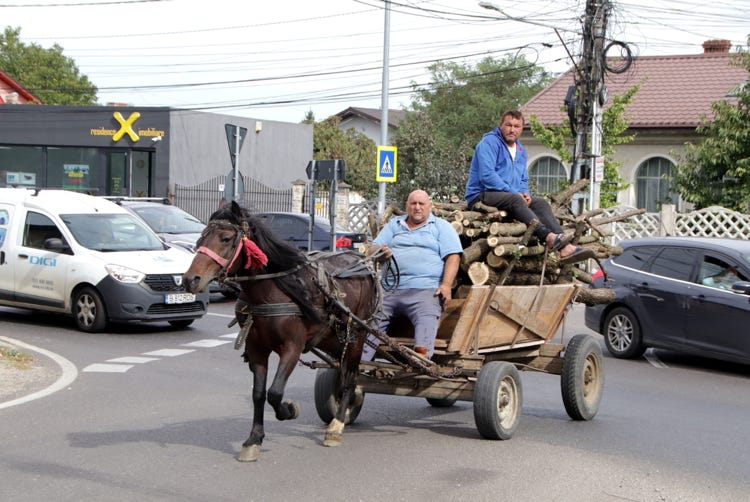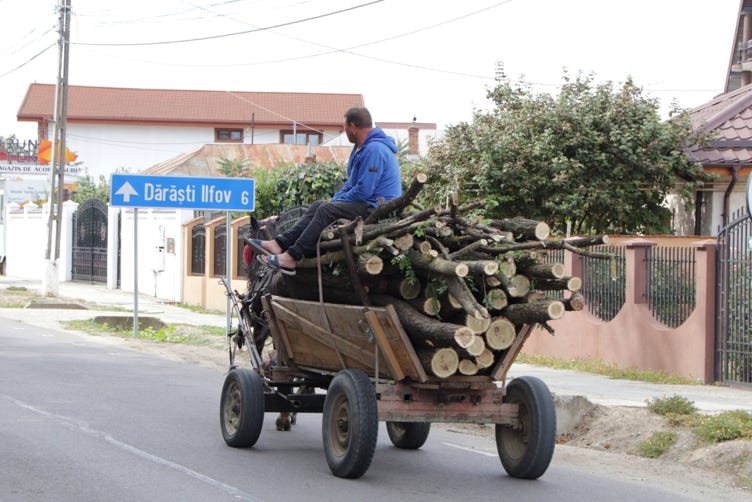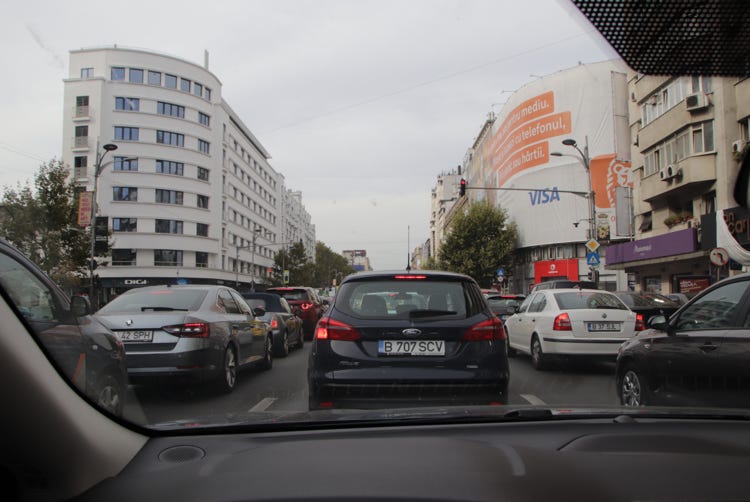
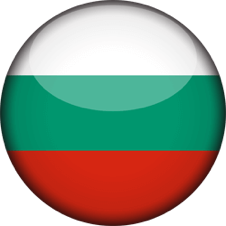

Varna to Bucharest

Distance travelled = 277 kilometres driving by road and 3.45 kilometres walking (4,570 steps).
Today was more a day of re-positioning than a day of making visits. My prime purpose was to cross the border from Bulgaria into Romania, as my rental car needs to be returned in Bucharest, which is also where my departure flight is scheduled.
I had a late night last night, getting to bed after 11:00pm as I had some important work e-mails to draft and send. Nonetheless, I didn’t want to sleep in too much this morning, knowing that the border crossing usually gets busier as the day progresses. I woke to my alarm at 7:00am, but didn’t manage to leave my hotel until almost 10:00am.
I had one stop I wanted to make in Varna before commencing my international drive. Some would argue it is Varna’s most spectacular sight, even better than the beach (not difficult!) and almost as large (more difficult). And yet, the otherwise excellent ‘Bradt Guide to Bulgaria’ and ‘Lonely Planet Guide to Romania and Bulgaria’ both puzzlingly omit any reference to it. The place I am referring to is, of course, the Monument of Bulgarian-Soviet Friendship.
A total of 305 steps, each of which is 15 metres wide, ascend Turna Hill as the “Staircase of Victors” to gain access to this massive concrete monument which was built to honour Soviet soldiers and their care for the Bulgarian masses. The monument is Very Big. Originally floodlit at night so it could be seen from ships on the Black Sea, the monument features four 11-metre high stern-faced Soviet soldiers standing at attention facing three presumably grateful Bulgarians, with some no-longer legible lettering between them. At the foot of the monument is a decaying bronze cube where an eternal flame once burned. Unlike several other monuments I have visited recently, the designers of this one DID actually understand how to set the angles to maximise the effectiveness of the sun’s light.
Interestingly, one of the Soviet soldiers seemed to have had pink paint poured over the head and shoulders, which I assume is supposed to represent blood judging by some of the graffiti at the base of the monument; it would have been quite a significant athletic achievement to climb up to the top of the monument to drop that paint.
The steps up to the monument are a popular fitness route for Varna’s runners and joggers, and I suspect most of the people who were there with me this morning were there for exercise rather than to admire the monument. Nonetheless, I had some really good conversations with some of the less athletic visitors, including a Bulgarian woman who moved to the US 25 years ago, but returns each year with her young adult son to visit her family. After we had introduced ourselves she asked me why I was visiting Bulgaria, I explained that I had been there 35 years previously with my family and I was interested to see and experience the changes. As I described some of our experiences in Romania and Bulgaria during that earlier visit (in response to her queries) she kept interrupting me to say to her son “you see, what I have said is true; listen to this man, he knows”, before turning to me and saying “the young ones just don’t understand, do they!”.
I finished the visit at 11:00am, and began my drive to the border. The first section of the drive (from Varna to Shumen) was along an excellent freeway, and my speed very seldom dropped below the (theoretical) maximum of 120 kilometres per hour. The second section (from Shumen to the border city of Ruse – [Русе]) was on a narrower and less-well maintained road, although unlike many roads in Bulgaria, it provided plenty of place to overtake slower vehicles safely.
Despite stopping to get some petrol (to use up my remaining Bulgarian cash), I arrived at the Bulgarian border checkpoint at 1:20pm. The border post on the Bulgarian side is now just a collection point for the toll to cross the bridge over the Danube River, so I paid my last 4 leva that I had kept for the purpose and crossed the Danube River Bridge.
As shown by inscriptions at the top of tall columns at each end of the bridge, the bridge was built between 1952 and 1954. Until the “new” bridge between Calafat and Vidin which I had used to cross from Romania into Bulgaria a week and a half previously was opened in 2013, the “Friendship Bridge” was the only bridge across the Danube River joining Romania and Bulgaria. With a length of 2.3 kilometres and a height of 30 metres above the water, it remains the longest steel bridge in Europe. The national boundary is the mid-point of the Danube, and is marked by a large overhead sign “Romania” for those travelling northwards, but seems unmarked when travelling to the south.
Having crossed the bridge, I joined the line of cars waiting to be processed in Giurgiu on the Romanian side of the border at 1:30pm. There were only eight cars in front of me, but it still took 20 minutes before I reached the booth, had my papers checked and passport stamped (first by a Bulgarian officer, and then by a Romanian official), and I was on my way (at 1:50pm).
The road north to Bucharest followed a route that was pretty without being especially photo-worthy. I planned to make just one stop on the way in a small town called 1 Decembrie (meaning 1st December). There was nothing remarkable about the town, but I had stopped there in 1987 while driving south to Bulgaria simply because it was unremarkable – I wanted to photograph some of the typical signs glorifying Nicolae Ceauşescu that were ubiquitous across Romania at the time. At the time of that visit, the town was known as 30 Decembrie, celebrating the date on which Romania had become a republic in 1947. The name was changed in 1996 to honour the date when the Kingdom of Romania was united with Transylvania in 1918,
I have included some then-and-now photos below, but because the focus of the 1987 photos was getting images of the propaganda signs, they may not show how great the changes I noticed have been. Although it was on the main road in 1987, the town was a fairly sleepy crossroads point at the time. Nowadays, it is a busy, noisy, ugly place with large trucks, heavy traffic and concrete barriers running along the centre of the main highway.
In some ways, the heavy traffic was good preparation for the final (and worst) part of the drive, crossing through the city of Bucharest from the south to my hotel in the north of the city. The traffic was heavy, erratic, loud and in parts chaotic, and it was a relief finally to reach my hotel at about 4:00pm, the final 18 kilometres having taken almost 50 minutes to complete.
I’m back at the same hotel in Bucharest where I stayed three weeks ago, and it is very comfortable. Having said that, there is one element that reminds me of Veliko Târnovo – the internet works in the corridor but doesn’t penetrate the door into my room. I think it may be time to re-activate my tethering to upload this day’s travel diary.

